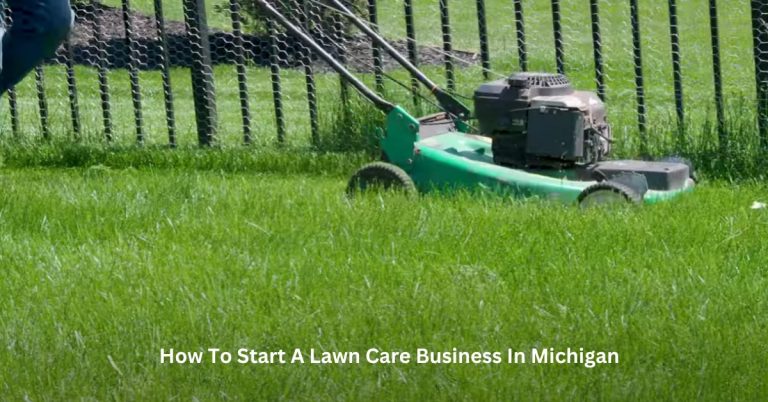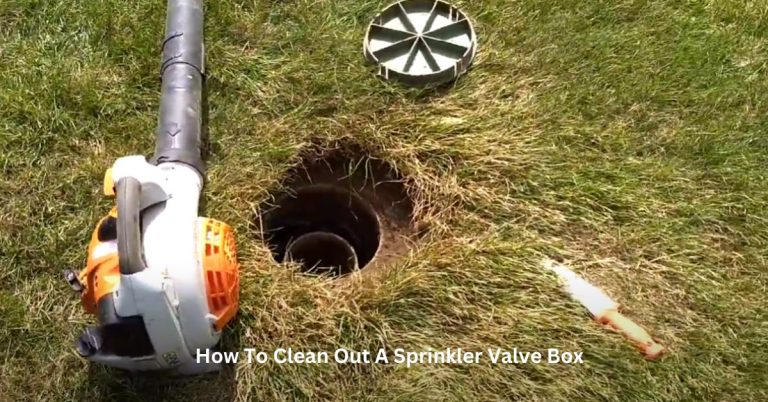How To Remove Dead Grass After Roundup?

Your lawn is practically a battlefield where weeds can grow on any given day. As you use various ruses to kill those enemy lines, it often backfires with a few allied souls’ deaths too.
I am talking about the grass that dies alongside the unwanted weeds. Then a new task arises – ridding of the deadweight before it can affect other comrades.
In short, you have to know how to remove dead grass after roundup. The good news is that you are in good hands here.
There are many ways you can remove the dead grass patch. Some use a dethatcher and a mower, while others follow suit with a sod cutter. Do not forget the rototiller either! Of course, the old-school shovel is another way to go.
Let me tell you everything in full context for you to know everything regarding this matter.
What Is Roundup And How Does It Work
Roundup is a brand of herbicide, specifically a glyphosate-based weed killer. It is used to kill weeds and grasses that compete with desired vegetation, such as in gardens, lawns, and agricultural fields.
It works by targeting an enzyme found in plants that is necessary for the production of certain amino acids.
When applied to the leaves of a plant, the roundup is absorbed through the foliage and transported to the roots, where it disrupts the plant’s ability to produce these amino acids. As a result, the plant will stop growing and eventually die.
Roundup is a non-selective herbicide, meaning it will kill most plants it comes into contact with. It is important to use roundup carefully and follow the instructions on the label to avoid damaging desirable plants or grass.
In other words, it is an herbicide powerful enough to eradicate any plant, all plants, in fact, within its touch. Its main active ingredient is Glyphosate, a chemical that eliminates any trace of roots, never to be grown again.
Although it sounds like a nightmarish product, it is highly recommended for post-emergence weed control. The operation period is about 14 days, during which you will notice a positive outcome.
So how does it kill other grass if you have targeted only the weeds on your lawn? You can call it a stroke of bad luck, fate, wind in the wrong direction, etc.
Whatever the case, the herbicide has eaten some of the precious grass patches. It is now lifeless. If you do not treat the area in time, that patch may remain empty for good.
The Potential For Dead Grass After Using Roundup
Using roundup or any other herbicide can potentially lead to dead grass if it is not used properly. Here are some factors that can contribute to dead grass after using roundup:
Overuse: Applying too much roundup or applying it too frequently can lead to the death of desirable grasses or plants. It is important to follow the instructions on the label and only use the recommended amount of herbicide.
Misapplication: If roundup is applied to the leaves of desirable grasses or plants, it can be absorbed and cause the death of those plants. It is important to be careful when applying roundup and avoid spraying it on desired vegetation.
Drift: If roundup is applied in windy conditions, it can drift and come into contact with desirable grasses or plants, potentially causing their death. It is best to apply roundup on calm days to minimize drift.
Residual Effects: Roundup can remain active in the soil for several weeks after application, which can lead to the death of new grass seedlings that are trying to grow. Following the instructions on the label for the recommended waiting period is important before planting new grass seeds.
By following the instructions on the label and using the roundup carefully, you can minimize the potential for dead grass after using the herbicide.
Different Ways To Remove Dead Grass After Roundup
The brown spots amidst a beautifully lush turf are sore to the eyes. However, you cannot remove those dead goners until 14 days have passed after the Roundup application.
Otherwise, the weed roots may grow again since they are pretty persistent to give up and die. I have used either manual tools from my storage or rented the big guns for the day over the years. Whatever suits you is the best option.
1. Sod Cutter
Personally, I find this machine to be the ideal dead grass remover for all with a yard/lawn. You can either borrow it or use your manual one. I vote for the motorized one as it saves time and energy.
You use it when the lawn area is quite large, and you want to prep the topsoil for sod installation. A sod cutter removes grass as well as up to 3 inches of the topsoil. This is where the roots are found thickest.
So, the piece of equipment does two jobs at the same time while readying the beds for new seeding. There are local garden equipment stores that rent such a machine within budget. Go for it!
2. Shoveling and Raking
I suggest these options for small yards or if you wish to handle the small patches yourself. In that case, no need to rely on heavy equipment.
Let me start with a shovel. The classic all-time favorite tool has saved my self-esteem many times.
The best way to deal with dead grass with a shovel is by dividing the dead zone into small sections with the tool. Perhaps 8 inches of a square per section will do. Now remove each slice by shoveling.
Make sure to take about 3 inches of topsoil too. It is just like using the sod cutter but manually. Now the ground is free of dead/stubborn roots and thatch.
You apply the raking method when you do not wish to waste the removed sod. Then, you can simply flip the removed section with dead grass upside down and rake the area smoothly. I call it composting the lawn with what you already have.
3. Rototiller
This garden tool actually loosens the topsoil by turning it over for planting new seeds. Many homeowners even operate it for undertaking weed control.
You can get either the big size or the small version for the task. My advice is to obtain a light model to accomplish more passes within time. Nevertheless, heavy ones are always best for a thorough job.
Be sure to set the depth to 6 inches so that it can pull deeper into the soil and cause no issues for new seeds application.
4. Dethatching Tool/Power Rake
Maybe it is a small patch of dead grass. Possibly you do not need to get rid of the entire root system.
This is when a power rake or a dethatching tool can help you achieve that desired finish. It may not be as powerful and fast as a sod cutter but lets you to complete the work at your pace.
Plus, it is cost-effective. Try mowing the yard as close to the soil as possible before using the tools.
5. String Trimmer
I have not forgotten about the dead grass between crevices and cracks. It is impossible to get a big, motorized machine over such an area.
Therefore, trimming shall be your best choice. You can also lift the stones, trim the dead grass, and put them back afterward. Placing stones over trimmed patches means no chance of weeds regrowth
Frequently Asked Questions
1. How Long Does It Take For Roundup To Take Effect?
The approximate duration is about 14 days. While the killing process is slow, it is highly effective in eradicating weeds from the roots.
2. What Are The Drawbacks On The Soil After Applying Roundup?
No matter the soil type, Roundup effects remain the same. Its active ingredient, Glyphosate, acidifies the soil too much, lowering pH levels and reducing microorganisms to an alarming level.
Also, it decreases the nutrient content and dries the moisture-retaining ability for a short while.
3. Should You Remove The Dead Grass After Using Roundup?
Yes, whether it is a whole ground or a small patch, remove the dead grass remains as soon as two weeks have passed after the herbicide. The brown vegetation will no longer regrow. It is better to prepare the area for a new sod application.
4. How To Treat Accidental Roundup Exposure On Plants?
In addition to being messy to apply, the roundup is unpredictable in nature. A windy day, leaking sprayer hoses, or an accidental spill may result in roundups getting sprayed all over your garden or lawn.
If quick action is taken, it may be possible to save any plant coated in the roundup, even grass or tender annuals. Flooding the area with water is the only and best way to get rid of the roundup.
Ideally, spray leaves and grass with a little pressure so that the roundup will not stick to the leaves. You have a better chance of surviving your plants if the roundup is washed off and diluted as soon as possible.
5. Is It Possible To Plant After Killing Grass With Roundup?
It is okay to plant new grass or other plants on your lawn if you’ve waited 14 days after spraying roundup and your old grass is dead. Getting rid of the old grass is the only thing you need to do.
Garden vegetables and grass can be planted within three days after roundup has been sprayed. After removing dead grass, you can plant new grass.
Please note that this applies to roundup products in general. Some roundup formulations prevent plant growth for months after application. Anything you plant in the area of application will not grow if you’ve used one of these to kill grass.
6. How Long Will It Take For The Grass That Roundup Has Killed To Grow Back?
The roots of grass that roundup has killed will not grow back. In addition to killing all types of plants completely, Roundup is a very effective chemical herbicide.
The grass plant will not grow back if it turns brown 14 days after being sprayed with Roundup.
Note that it is not possible to kill weeds with roundup. Areas previously sprayed with Roundup may sprout weeds and grass seedlings.
Due to its non-pre-emergent properties, standard roundup does not kill weeds or grass seeds. When you use roundup, you risk re-invading a grassy area, so plant a new lawn or take further measures to prevent weeds.
Roundup Notes:
With very little room for error, the roundup is an effective post-emergent herbicide that kills grass and weeds to the root. This process is time-consuming, however.
Rushing things may result in partial removal of dead grass and plant matter or disruption of the process, which can result in only the top layer of grass or weeds dying.
If you plan to remove dead grass and plant matter after using roundup, wait two weeks before doing so.
Using Roundup May Require More Work Than You Think
Regardless of the method you choose to remove dead grass after Roundup treatment; if you are removing an entire yard, the process can be brutal. There is no way to avoid this.
The process is much easier than pulling up live grass, sod, or weeds. You’ll still need to do a lot of work if you want the best soil for your lawn or plants, but it will all come together in the end.
Wrapping Up
I have shed some light on removing dead grass after roundup so you can confidently prepare the lawn for the season.
Remember that you must treat the soil where roundup is applied if you do not want empty spots here and there.
You can readjust the soil by watering the areas, improving the pH level, adding organic matter/compost, mending the soil texture, etc.
It helps you obtain fruitful results when planning for a fresh start.






